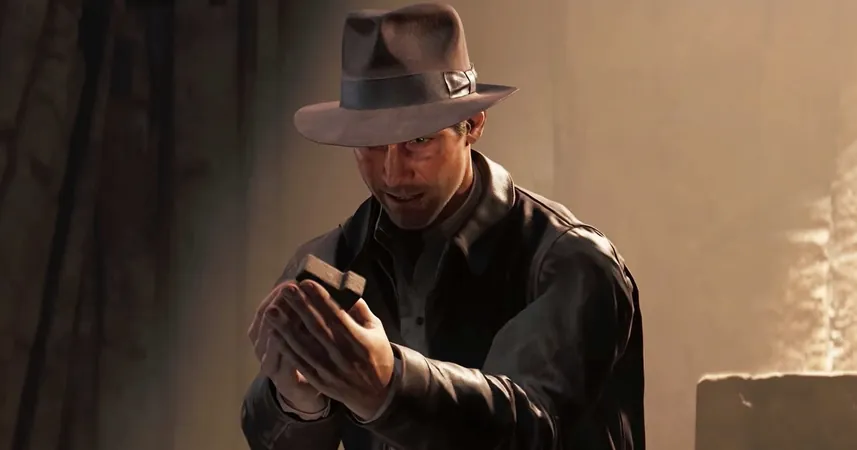
Black Hole Chaos: Stellar Destruction and Cosmic Mystery Unraveled by NASA
2024-10-12
Author: Yan
Introduction
In a groundbreaking discovery, NASA’s Chandra X-ray Observatory and other state-of-the-art telescopes have observed a supermassive black hole that has not only obliterated a star but is also utilizing the remnants to launch an assault on another celestial body. This revelation sheds light on the enigmas surrounding black holes, particularly the turbulent environments surrounding them.
Artist’s Illustration of Stellar Debris
A captivating artist’s illustration depicts a swirling disk of stellar debris—colored in vibrant reds, oranges, and yellows—formed after a black hole exerted its formidable tidal forces on a hapless star. Over several years, this disk expanded dramatically and intersected with another astronomical object—either a smaller star or a lesser black hole—orbiting the supermassive black hole. Each collision generated a burst of X-rays, which were meticulously cataloged by Chandra.
The Chase Begins
The chase began in 2019 when an optical telescope based in California detected an unusual burst of light, which astronomers later classified as a 'tidal disruption event' (TDE)—a phenomenon occurring when a black hole devours a star due to its immense gravitational forces. This specific TDE received the designation AT2019qiz.
Quasi-Periodic Eruptions
Meanwhile, astronomers were observing another set of phenomena: ephemeral and repetitive bursts of X-rays near supermassive black holes, termed 'quasi-periodic eruptions' (QPEs). The latest research suggests a possible link between TDEs and QPEs, positing that the bursts of X-rays associated with QPEs may originate from objects colliding with the debris disk formed following a TDE.
Collaboration and Findings
In a remarkable 2023 collaboration, astronomers employed both the Chandra and Hubble Space Telescopes to analyze the remnants after the TDE had unfolded. Their findings, resulting from nearly 14 hours of Chandra observations, revealed a powerful X-ray signal during the event's peak, allowing scientists to uncover more about the characteristics of the debris disk.
Monitoring AT2019qiz
Utilizing NASA’s Neutron Star Interior Composition Explorer (NICER), researchers monitored AT2019qiz and found that X-ray bursts occurred roughly every 48 hours. These findings were corroborated through observations from NASA's Neil Gehrels Swift Observatory and the Indian AstroSat telescope.
Ultraviolet Data and Disk Dimensions
Additionally, ultraviolet data captured by Hubble enabled the team to ascertain the dimensions of the disk around the supermassive black hole. They discovered that any object orbiting this black hole completes its path in approximately a week or less, leading to inevitable collisions with the disk and, consequently, energetic eruptions.
Implications of the Research
The implications of these results are profound. By identifying more quasi-periodic eruptions linked to tidal disruptions, astronomers can gain insights into the abundance and orbits of celestial objects closely revolving around supermassive black holes. Such knowledge could even aid in identifying potential targets for future gravitational wave observatories.
Conclusion
The comprehensive study detailing these findings is set to be published in the October 9, 2024, edition of the journal Nature, spearheaded by Matt Nicholl from Queen's University Belfast. This research not only unravels the complexities surrounding black holes but also enhances our understanding of cosmic interactions and the violent processes shaping the universe. Stay tuned as we continue to uncover the secrets of the cosmos!



 Brasil (PT)
Brasil (PT)
 Canada (EN)
Canada (EN)
 Chile (ES)
Chile (ES)
 España (ES)
España (ES)
 France (FR)
France (FR)
 Hong Kong (EN)
Hong Kong (EN)
 Italia (IT)
Italia (IT)
 日本 (JA)
日本 (JA)
 Magyarország (HU)
Magyarország (HU)
 Norge (NO)
Norge (NO)
 Polska (PL)
Polska (PL)
 Schweiz (DE)
Schweiz (DE)
 Singapore (EN)
Singapore (EN)
 Sverige (SV)
Sverige (SV)
 Suomi (FI)
Suomi (FI)
 Türkiye (TR)
Türkiye (TR)